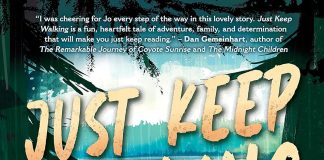Darned mice! This winter my seed stash was depleted by vile, ravenous hordes of mice. Truth be told it was most likely one cold, starving little field mouse that just happened upon the mother lode of my seed library and is now a warm, fat and happy little field mouse.
I made the discovery today when I decided it was time to start planning my gardening for the spring and summer. I know it’s not even the new year as I write this, but I miss my garden. I miss digging in the soft, fragrant soil. I miss the neat little rows of sprouts poking through the ground. Scented holiday candles can’t compare to the heady scent of greenery and fresh-cut flowers to put in my living room. Grocery store veggies may look pretty, but sun ripened, freshly picked vegetables and fruits explode with flavor when you bite into them. I even have made friends through the bonds of gardening, sharing flowers, fruits, veggies and even seeds. Yes, I miss my garden.
As it says in Ecclesiastes 3 “There is a time for everything, and a season for every activity under the heavens.” Now it is time to plan. I have several perennial flower seeds to start in my flower beds and surrounding pollinator garden. Zinnias, moonflowers, hollyhocks, milkweed – just to name a few. Last year I planted an army of bulbs. Mapping where I put them helped to know what should have bloomed. Some were a bit old and didn’t grow. In addition, I planted them in the spring instead of the fall; I hope to see more tulips, daffodils, irises, day lilies and tiger lilies this spring. Perennials come back year after year, but the blooms do not last long. Mapping your garden helps you know where your perennials are, allowing you to dig up and move bulbs of a certain flower, or plant annuals around them.

Annuals must be planted every year from seeds and their flowers generally last a full season. Mapping gives you a record. If you like how something grew, you know where and when you planted it. If certain plants don’t work well for you, then you know you have a space to plant something else. I have lots of marigold seeds from deadheading my plants in the fall. They will look nice near the purple irises and will last through the summer. Plus, marigolds/calendulas make a wonderful border, and assist in keeping insects, pests, and some rodents out of vegetable gardens.
When planning my gardens, I research the needs of the plants to ensure I have enough space both horizontally and vertically for my plants to grow. Mapping out my garden helps with the spacing. Usually, I plant squashes and melons on the outer edge of the garden to trail into my yard rather than take up space from other vegetables. If you like a vertical garden, many vining vegetables like pole beans, peas, and cucumbers will easily train up a trellis or cattle panel. Indigenous cultures planted companion plants corn, beans and squash – also known as the three sister crops so that vining beans or squash grew up the corn stalks. Planting okra to tower over eggplant with summer squash is a similar sister companionship, plus they make for a great casserole or stir fry!
In addition, I research how my plants pollinate. Cucumbers and squash need to be kept separated as they will cross pollinate and neither will taste very good. Tomatoes and peppers should be on opposite sides of the garden, as well. Both are of the nightshade family and are susceptible to the same fungal diseases. Plus, hot peppers will make your tomatoes taste a bit off.

Planning your garden requires consideration of seasonal temperatures, too. Tender leafy green crops like lettuce and spinach can last longer into the season if they can be shaded by other plants like sunflowers or even broccoli. Companion planting leafy crops, like lettuce and spinach, work well in the same area with carrots. The roots for leafy greens are not deep and will not compete with carrot root. Carrot greens are not dense and leave space for the leafy greens to flourish. As you plan your garden, research when your plants will be ready to harvest. Many times when a spring/summer crop is finished there is still time to plant a fall crop like beets or turnips.
Research is very important. Check the germination time of your seeds, the duration of blooms and the time until harvest. This will help you to select which plants will work best in a particular location. Some plants you can start from seeds indoors – up to several months before planting outside. Words of advice for starting seeds indoors: start two to three times more seeds than you plan to grow. Not all seeds will germinate, and not all seedlings will make it through the hardening process of moving to the outdoors. If you have extra starters at planting time, they make great gifts. You can even make new friends by sharing them!
- Lastly, consider how your garden will look. I plan my vegetable gardens to be aesthetically appealing, too. Flower gardens are much more interesting when there are a variety of colors, heights, and textures such as bushes, flowers and grasses. While a field of bluebonnets in Texas or a Dutch farm filled with tulips may be awe inspiring at a first glance, a simple garden with a plethora of sights, textures, scents and even tastes will keep you engaged for an entire season.






